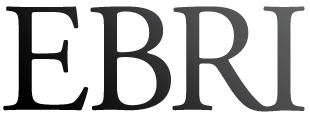Summary
Executive Summary
The bulk of 401(k) assets were invested in stocks. On average, at year-end 2016, 67 percent of 401(k) participants’ assets were invested in equity securities through equity funds, the equity portion of balanced funds, and company stock. Twenty-seven percent of assets were in fixed-income securities such as stable-value investments, bond funds, money funds, and the fixed-income portion of balanced funds.
More 401(k) plan participants held equities at year-end 2016 than before the financial market crisis (year-end 2007), and most had the majority of their accounts invested in equities. For example, more than three-quarters of participants in their twenties had more than 80 percent of their 401(k) plan accounts invested in equities at year-end 2016, up from less than half of participants in their twenties at year-end 2007. Overall, more than 90 percent of 401(k) participants had at least some investment in equities at year-end 2016.
About two-thirds of 401(k) plans, covering about three-quarters of 401(k) plan participants, included target-date funds in their investment lineup at year-end 2016. At year-end 2016, 21 percent of the assets in the EBRI/ICI 401(k) database were invested in target-date funds and more than half of 401(k) participants in the database held target-date funds. Also known as lifecycle funds, these funds are designed to offer a diversified portfolio that automatically rebalances to be more focused on income over time.
A majority of new or recent hires invested their 401(k) assets in balanced funds, including target-date funds. For example, at year-end 2016, 71 percent of recently hired participants held balanced funds in their 401(k) plan accounts. Balanced funds made up 45 percent of the account balances of recently hired 401(k) participants at year-end 2016. A significant subset of that balanced fund category is invested in target-date funds. At year-end 2016, 38 percent of the account balances of recently hired participants were invested in target-date funds.
401(k) participants’ investment in company stock continued at historically low levels. Six percent of 401(k) assets were invested in company stock at year-end 2016, the lowest share observed in the database. This share has fallen by 69 percent since 1999 when company stock accounted for 19 percent of assets. Recently hired 401(k) participants contributed to this trend: they tend to be less likely to hold company stock. At year-end 2016, in plans offering company stock, less than one-quarter of recently hired 401(k) plan participants held company stock, compared with about 40 percent of all 401(k) participants.
401(k) participants were a bit more likely to have loans outstanding at year-end 2016 than at year-end 2015. At year-end 2016, 19 percent of all 401(k) participants who were eligible for loans had loans outstanding against their 401(k) plan accounts, slightly up from 18 percent at year-end 2015. Loans outstanding amounted to 11 percent of the remaining account balance, on average, at year-end 2016, down 1 percentage point from year-end 2015. Loan amounts also edged down a bit in 2016.
The year-end 2016 average 401(k) plan account balance in the database was 18 percent higher among consistent participants in the database in both 2015 and 2016. To understand changes in 401(k) participants’ average account balances, it is important to analyze a sample of consistent participants. Among all participants, the average account balance in the year-end 2016 database was 3 percent higher than the average account balance in the year-end 2015 database. However, this largely reflects the changing composition of the sample, rather than the experience of typical 401(k) participants in 2016. As with previous EBRI/ICI updates, analysis of a sample of consistent 401(k) plan participants is expected to be published later this year.
The average 401(k) plan account balance tends to increase with participant age and tenure. For example, at year-end 2016, participants in their forties with more than two to five years of tenure had an average 401(k) plan account balance of about $38,000, compared with an average 401(k) plan account balance of more than $287,000 among participants in their sixties with more than 30 years of tenure.

